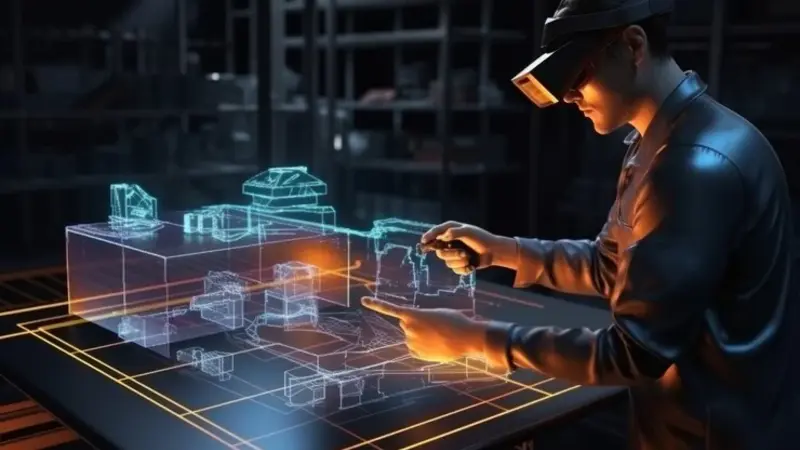The Industrial Internet of Things (IIoT) represents a seismic shift in how industries operate, offering unprecedented connectivity, efficiency, and data-driven decision-making capabilities. By embedding sensors and networking technology into machinery, equipment, and processes, businesses can unlock powerful insights into their operations, optimize performance, and even predict maintenance needs before breakdowns occur. This blog post delves into the nuances of IIoT deployment, offering practical insights for businesses looking to navigate this transformative landscape.
Understanding the Industrial IoT Landscape
The IIoT ecosystem is vast, encompassing everything from simple sensor-equipped machinery to complex networks of interconnected devices streaming real-time data. At its core, IIoT aims to enhance operational efficiency, improve safety, and reduce costs by leveraging data analytics and automation. Successful deployment hinges on understanding the specific needs of your operation and how IIoT solutions can meet those needs.
Optimizing Data Center Connectivity for IIoT Success
In the heart of every IIoT system lies a data center that processes, analyzes, and stores vast amounts of information generated by connected devices. Enhancing data center connectivity is crucial for the streamlined performance of IIoT networks, ensuring that data flows seamlessly from the edge to the cloud. This section navigates the critical aspects of data center connectivity, including the adoption of advanced networking technologies, the importance of cybersecurity measures, and the implementation of scalable infrastructure to accommodate the exponential growth of data in industrial environments. By focusing on these key areas, businesses can significantly improve the efficiency and reliability of their IIoT systems, driving operational excellence and innovation.
Key Considerations for IIoT Deployment
- Strategic Planning: Begin with a clear strategy that aligns with your business objectives. Identify key areas where IIoT can deliver value, such as predictive maintenance, energy management, or process optimization.
- Technology Selection: Choose the right mix of hardware and software that fits your operational requirements and budget. Consider scalability, compatibility with existing systems, and the ability to integrate new technologies in the future.
- Data Management: Data is the lifeblood of IIoT. Develop a robust framework for collecting, storing, analyzing, and acting on the data generated by your IIoT devices. Ensure data accuracy, security, and privacy are top priorities.
- Connectivity Solutions: Reliable connectivity is crucial for IIoT devices to communicate effectively. Evaluate different networking options (e.g., Wi-Fi, LTE, LoRaWAN) based on coverage, bandwidth, and reliability needs.
- Security Measures: IIoT expands the attack surface for cyber threats. Implement comprehensive security protocols, including encryption, access controls, and regular software updates, to protect your network and data.
- Change Management: The adoption of IIoT often requires significant organizational changes. Prepare your team through training, and establish a culture that embraces innovation and continuous improvement.
- Partner with Experts: Navigating the IIoT landscape can be challenging. Collaborate with technology providers, consultants, and industry peers who can offer valuable insights and support.
Real-World IIoT Deployment Insights
- Pilot Projects: Start small with pilot projects that can demonstrate quick wins and ROI. Use these projects to refine your approach and build confidence among stakeholders.
- Scalability: Design your IIoT system with scalability in mind. As your needs grow, your system should be able to accommodate more devices and data without significant overhauls.
- Cross-Functional Teams: Create cross-functional teams that bring together IT, operations, and engineering expertise. This collaborative approach ensures that IIoTsolutions are practical, scalable, and aligned with business goals.
- Continuous Learning: The IIoT field is rapidly evolving. Stay informed about new technologies, standards, and best practices. Be open to adapting your strategy as the industry progresses.
Deploying IIoT in industrial settings offers transformative potential for businesses willing to embrace its complexities and challenges. By focusing on strategic planning, choosing the right technologies, prioritizing data management and security, and fostering an innovative organizational culture, companies can successfully navigate the IIoT landscape. The journey towards fully realizing the benefits of IIoT is ongoing, requiring continuous learning and adaptation.
In conclusion, connecting the dots in the industrial IoT landscape is not merely about technology deployment; it’s about reshaping the future of industries. With thoughtful consideration and strategic action, businesses can harness IIoT to drive efficiency, innovation, and sustainable growth.
